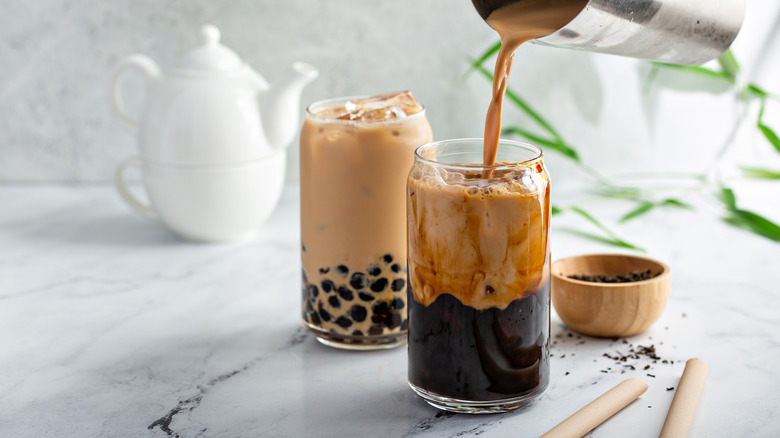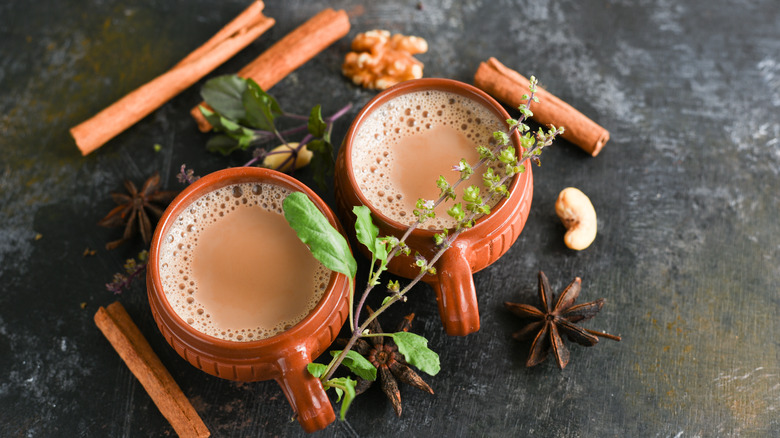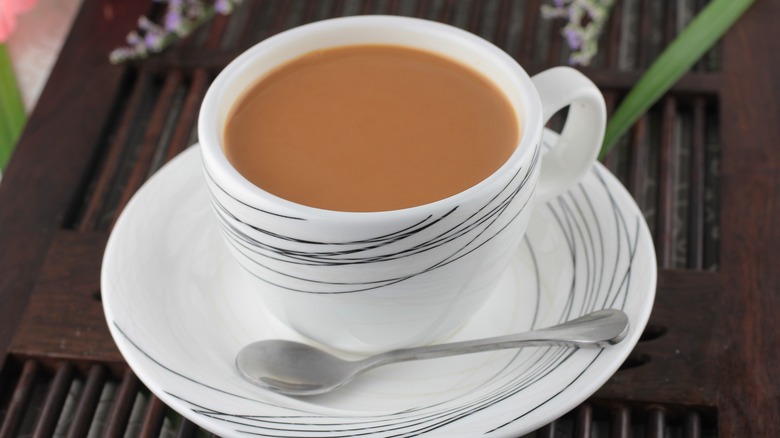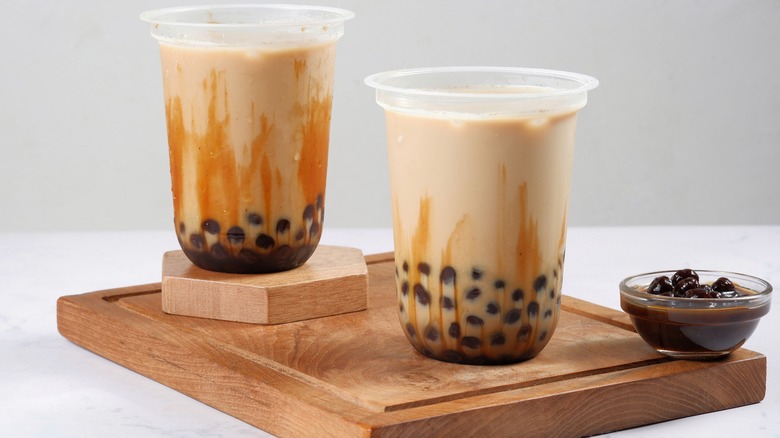The Difference Between Hong Kong And Taiwanese-Style Milk Tea
Enjoying a cup of tea is not just relaxing but might have health benefits for your body. There are many different kinds of tea; however, when talking specifically about milk tea, two popular options are Taiwanese and Hong Kong-style milk teas. This particular milk tea made its way into the US market in the 90s but has only gained popularity over the last decade, according to Tea & Coffee Trade Journal.
Just as the names suggest, Hong Kong-style milk tea hails from Hong Kong while Taiwanese-style milk tea is from Taipei, Taiwan. Because of the popularity of Taiwanese-style milk tea, most boba milk shops prioritize this milk tea option over its Hong Kong-style counterpart. Due to the ubiquitous nature of Taiwanese tea, many tea-loving people don't know the difference between the two. The good news, however, is that, while these two types of milk teas are similar in many ways, it is still easy to quickly spot the difference. Take a look at the other things you need to know about these two milk tea options.
The history behind Hong Kong milk tea
You might not know this, but there is a rich history behind every cup of milk tea you sip at your local boba shop. In fact, what you currently know as milk tea is a delicate combination of two different tea-loving cultures: Hong Kong and Britain. According to Reuters, the story began in Hong Kong around the 1840s when the British established their colonial administration in Hong Kong. Both the Hong Kongers and the British enjoyed drinking tea; however, the indigenous version of tea was rich in flavor thanks to the variety of ingredients and rigorous preparation methods.
The British tea, on the other hand, was mild with plenty of milk. Over the years, British milk tea was considered a luxurious option until some restaurants decided to combine the best of the two types of teas to come up with what is currently referred to as Hong Kong-style milk tea. These traditions are still popular, and Hong Kongers even prefer their special tea to coffee or coffee houses (per Reuters).
Hong Kong-style milk tea preparation
Compared to Taiwanese-style, Hong Kong milk tea is rich in tea flavor thanks to the meticulous and complicated production process. For this particular type of milk tea, the tea ingredients are the bulk of it all. This is necessary especially if you want to get that hearty tea flavor synonymous with Hong Kong black tea. According to the Intangible Cultural Heritage Office, preparing Hong Kong-style milk tea takes five main processes: Blending the tea leaves, boiling to extract the tea, force pouring tea, brewing, and force pouring milk.
In addition, the tea also has to pass through a filtration system of fine sieves, hence the nickname "silk-stocking" or "pantyhose tea." This filtration process is quite necessary to achieve heavy yet smooth tea. Another thing worth noting is that the preparation process involves the use of evaporated milk and a special type of black tea — usually Ceylon, or another strong variety (via Simple Loose Leaf).
Taiwanese-style milk tea preparation
Also referred to as bubble tea, Taiwanese-style milk tea is the popular option of the two milk teas. Unlike Hong Kong-style milk tea, the Taiwanese style doesn't quite focus on having a strong tea flavor; rather, it is made with a significantly more amount of natural milk or a non-dairy creamer of choice. Generally, this tea is also sweeter than the Hong Kong style thanks to the inclusion of syrups (via The Daily Meal), which may be a contributing factor to its popularity. It's also often made with powdered milk substitutes, rather than fresh or evaporated milk (per The Daily Meal).
Another noteworthy difference between the two milk teas is that the Taiwanese style also includes several chewy treats like tapioca balls, and comes in a variety of flavors. As far as the preparation process is concerned, making Taiwanese-style milk tea is simpler with fewer steps compared to its Hong Kong counterpart. The process of brewing the tea is straightforward, with no straining through special filters.
While this drink is commonly served cold, some boba shops also prepare hot bubble tea options.



